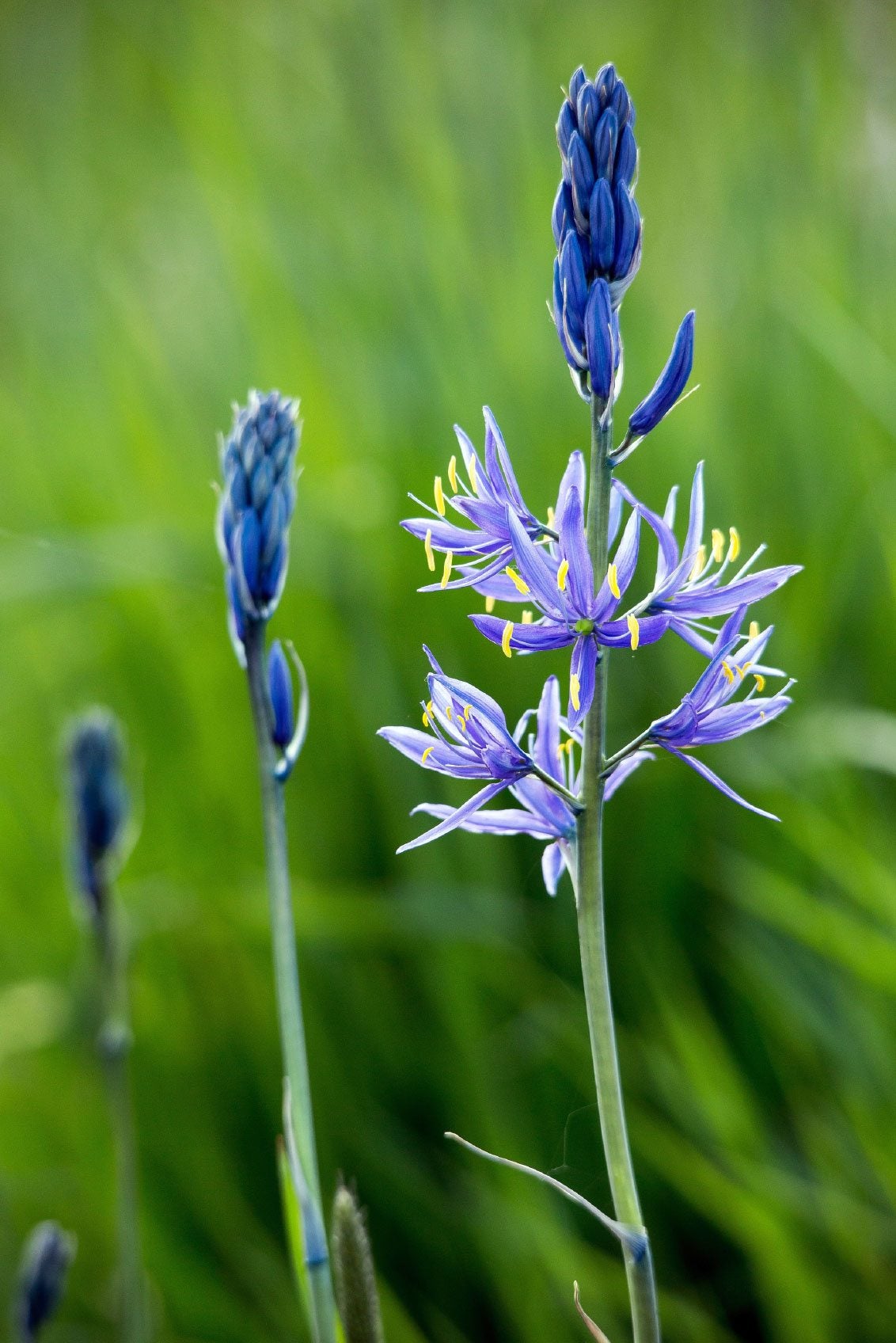Camassia Lily Bulb Growing: Information On Camas Plant Care

Nothing is quite as interesting as the Camassia lily, also known as camas lily. Botanist Leslie Haskin notes that, “There is more romance and adventure clustered about the camas root and flower than about almost any other American plant.” - so much so that feuds erupted over disputes about ownership of camas fields, which were so extensive they were described as looking like large, deep-blue “lakes.” Let's learn more about Camassia lily bulb growing.
What is Camassia?
The Camassia lily bulb (Camassia quamash syn. Camassia esculenta) is a beautiful spring blooming, native North American plant that will grow in USDA plant hardiness zones 3-8. This pretty flowering bulb is a member of the asparagus family and was an important food staple for both Native Americans and early explorers to our country. The nutritious bulbs were commonly tossed into pits with wet grass and roasted for two nights. They were also stewed and made into a pie similar to a squash or pumpkin pie. The bulbs can also be pounded to make flour and even molasses. This attractive plant is a member of the Lily family and sports either bright blue flowers on an erect stalk. The bulb has an interesting appearance and is covered in black bark. Sadly, wild and well-enjoyed Camassia bulbs are not seen in masses like they once were. However, the plant can still be found in common gardens throughout our country. CAUTION: It should be noted that while the bulbs of this camas plant are edible, it is often confused with a similar toxic plant referred to as Death camas (Zigadenus venenosus). Before eating camas bulbs or ANY plant for that matter, check with your local extension office or other reputable resource or herbalist to ensure its proper identification.
How to Grow Camas Lily Plants
Camassia lily bulb growing is really quite easy. The best time to plant these beauties is in the fall or early winter. Camassia plants prefer moist conditions and full sun to partial shade. Although you can plant seeds, they will take up to three years to bloom. If time is not an issue, you can scatter the seeds on the prepared soil and cover with 2 inches (5 cm.) of organic mulch. Plant a minimum of 20 seeds per square foot (30x30 cm. square) for best results. If you are planting bulbs, the soil depth should be 4 to 6 inches (10-15 cm.), depending on bulb maturity. The bulb, which pushes a central stalk through the ground in early spring, will bloom blue or white. New varieties even offer plants with variegated leaves.
Caring for Camas Plants
Camas plant care is quite easy thanks partially to the fact that they disappear soon after blooming. The plant returns to the ground to return again next year, no special handling is required. Because they are early bloomers, camas should be planted with other perennials that will fill in their spaces once they are done blooming - daylilies work great for this.
Gardening tips, videos, info and more delivered right to your inbox!
Sign up for the Gardening Know How newsletter today and receive a free copy of our e-book "How to Grow Delicious Tomatoes".
-
 Looking For Plants To Give You The Soft And Fuzzies? Try These 5 Fuzzy Leaf Plant Options
Looking For Plants To Give You The Soft And Fuzzies? Try These 5 Fuzzy Leaf Plant OptionsLovers of texture, drama, silver foliage and tactile plants will adore these special sensory garden additions. These fuzzy leaf plant options will leave you all aglow
By Susan Albert
-
 Get Ready For A Summer Of Hummers! Grow These Full Sun Hummingbird Plants and Flowers
Get Ready For A Summer Of Hummers! Grow These Full Sun Hummingbird Plants and FlowersIf you’re lucky enough to enjoy a sunny backyard, make sure you are maxing out on your pollinator opportunities and grow these full sun hummingbird plants and flowers
By Tonya Barnett